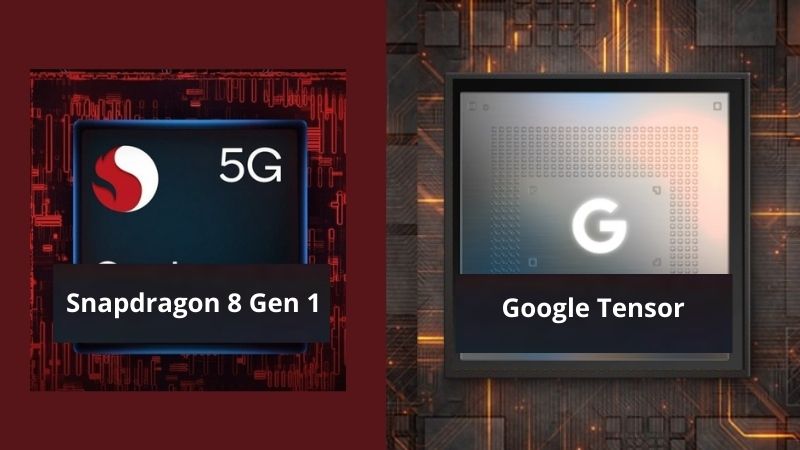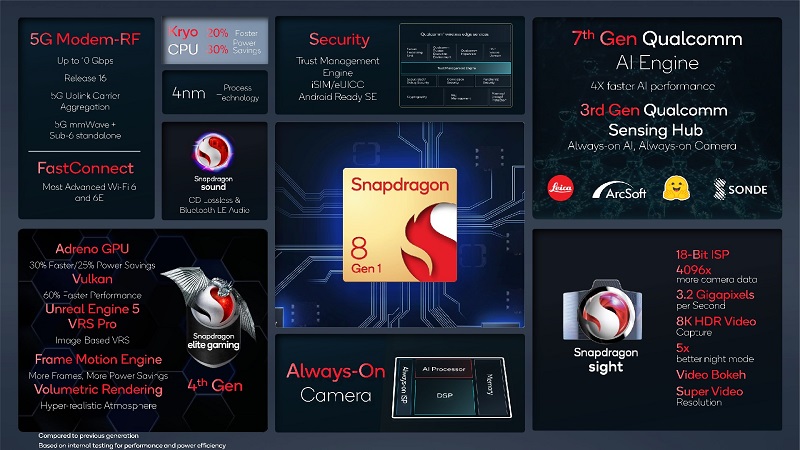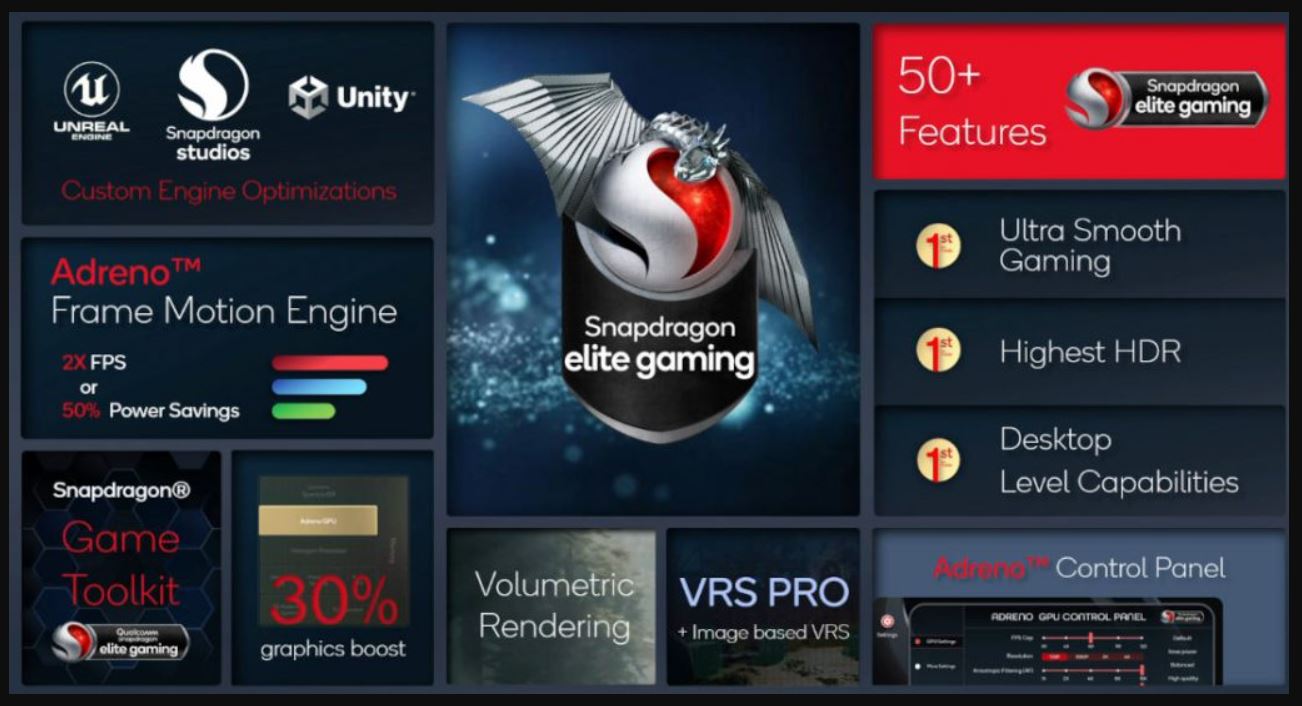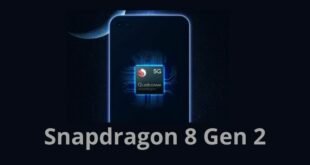Google unveiled its all-new Google tensor chipset at the Pixel 6 and Pixel 6 Pro launch event. Google Tensor chipset is a new custom chip designed specifically for Google Pixel smartphones. As a result, don’t expect to see the Tensor chip on other OEM smartphones. Qualcomm, on the other hand, has finally launched its new flagship Snapdragon 8 Gen 1 chipset via the Snapdragon tech summit event. The Snapdragon 8 Gen 1 is a significant upgrade over the Snapdragon 888. Both chipsets are high-end flagship chipsets or the most powerful chipsets available from Qualcomm and Google, respectively.
In this post, we’ll compare the Snapdragon 8 Gen 1 and the Google Tensor chipset. We will discuss and compare various aspects of the processor, such as CPU, GPU, power efficiency, and benchmarks. Read to the end to find out who will lead this comparison.
Snapdragon 8 Gen 1 vs Google Tensor
CPU comparison
Starting from the CPU, the part responsible for all the day-to-day tasks. The Snapdragon 8 Gen 1 offers a single Cortex-X2 core clocked at 3.0 GHz, three Cortex-A710 cores clocked at 2.5GHz, and four Cortex-A510 cores clocked at 1.8GHz. They are based on ARM’s latest ARM v9 architecture. As for the Tensor, it offers a single Cortex X1 core clocked at 2.28GHz, two Cortex-A76 cores at 2.25GHz, and four Cortex-A55 cores at 1.8GHz. So, from the on-paper specs, it’s obvious that the Snapdragon 8 Gen 1 is more powerful. Whether the primary Cortex X2 core or the secondary Cortex A710 core, Snapdragon is a step ahead of Google Tensor.
In addition, some thermal throttling has been noticed on the Google Tensor chipset. At the same time, the Snapdragon claims up to 30% better thermal and heating management than the Snapdragon 888, which had major heating issues. Furthermore, the Snapdragon chipset should benefit from ARM’s latest v9 architecture. The Google Tensor’s CPU will likely be based on the ARM v8 architecture, though no official confirmation has been provided.
GPU comparison
Let’s get to the part that’s in charge of the device’s gaming, editing, and multitasking capabilities. The Snapdragon 8 Gen 1 has an improved Qualcomm Adreno GPU, whereas the Google Tensor chipset has a 20-core variant of the ARM Mali-G78 MP20 GPU. In the 3DMark Wildlife benchmark test, the Tensor scores an impressive 6,300 points. The Snapdragon 8 Gen 1 benchmark scores have yet to be revealed. As a result, we can’t say much about the GPU performance of the chipsets just yet. However, based on past performance, it is expected that Tensor will compete with the Snapdragon 8 Gen 1 or that the 8 Gen 1 chip will perform slightly better.
Power Efficiency
Regarding power efficiency, the Snapdragon 8 Gen 1 is based on Samsung’s 4nm fabrication process, whereas the Tensor is based on Samsung’s 5nm fabrication process, which is one generation old. Because the Snapdragon is 1 nm smaller than the Tensor, it should consume less power. The power consumption, however, is entirely dependent on OEM optimization and software tweaking.
ISP and Connectivity
The Snapdragon 8 Gen 1 is the first Snapdragon processor to feature an 18-bit ISP. According to Snapdragon, the ISP can capture 108MP single-camera footage at 30fps with zero shutter lag. On the Tensor side, we know it uses the HDRnet algorithm to process Live HDR+ videos at 4K 60 frames per second. The Snapdragon 8 Gen 1 can record 8K HDR videos at 30 FPS and 4K videos at 120 frames per second, but the Tensor chip can only record 4K 60 frames per second. In addition, the Snapdragon 8 Gen 1 can shoot up to 240 12MP images in a second. Again, image processing can also differ from OEM to OEM.
In terms of connectivity, the Snapdragon 8 Gen 1 comes with the Snapdragon X65 5G modem, which is arguably the best 5G modem on the market. The Samsung Exynos 5123 modem is available from Google. The Snapdragon claims a download speed of up to 10 Gbps, while the Tensor claims a download speed of 7.35 GBPS. Additionally, the Snapdragon supports WiFi 6, WiFi 6E, and Bluetooth V5.2, whereas Google supports WiFi 6E and Bluetooth V5.2. When it comes to connectivity, the Snapdragon has a slight advantage.
AI and ML
The Snapdragon claims that Snapdragon 8 Gen 1 can give up to 2X improved AI performance with its 7th Gen Qualcomm AI Engine, compared with the Snapdragon 888. Snapdragon has teamed up with Leica to offer Leica Leiz Look filters to recreate Leica’s bokeh effect. As for the Google Tensor, it comes with many AI-based features such as Magic Eraser, Motion mode, Live Translate, and Google Assistant voice typing. The AI and ML score of the Google Tensor was higher than the Snapdragon 888. But, as the scores of the Snapdragon 8 Gen 1 haven’t been revealed yet, we can’t say much about it.
Which one is Better?
Coming down to the conclusion, the Snapdragon 8 Gen 1 is a better chipset than the Google Tensor chipset on paper or in terms of specifications. However, because Snapdragon isn’t explicitly designed for a single OEM, real-world performance will depend highly on the OEM’s optimization and software tweaking. Even though the Snapdragon 8 Gen 1 is a better chipset, the Google Tensor performs just as well, and both chipsets are overkill for 80% of users.





